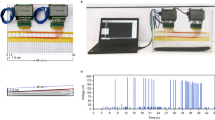Abstract
Electrogenic fishes have the unique ability to generate electrical discharges from specialized organs composed of electrocytes. These electrical discharges can be used for predatory behavior, inter-/intra- species communication, and electrolocation capabilities. Electrophorus electricus, more commonly referred to as the electric eel, is the only large, freshwater, electrogenic fish species belonging to the order Gymnotiformes that is both electroreceptive and capable of generating both weak and strong electrical discharges. Because of this, it has been a source of awe and inspiration for innovators across the globe who have utilized and reverse engineered the biological tools of this organism to develop technologies ranging from the use of the animal as a power source, to generation of electricity from mechanical energy, to the development of artificial, electrogenic cells. Thus, the electrobiology of the electric eel has served as a springboard for applications in industrial, recreational, and healthcare settings and may continue to influence future innovation.
Access this chapter
Tax calculation will be finalised at checkout
Purchases are for personal use only
Similar content being viewed by others
References
Moller, P., Electric fishes: history and behavior. Chapman and Hall, London (1995)
Alves-Gomes, J.A.: The evolution of electroreception and bioelectrogenesis in teleost fish: a phylogenic perspective. J. Fish Biol. 58, 1489–1511 (2001)
Nelson, M.E.: Electric fish. Curr. Biol. 21(14), R528–R529 (2011)
Bennett, M.V.L.: Comparative physiology: electric organs. Annu Rev. Physiology 1970, 471–528 (1970)
Watanabe, A., Takeda, K.: The change of discharge frequency by A.C. Stimulus in a weak electric fish. J. Exp. Biol. 40, 57–66 (1963)
Mermelstein, C.D.S., Costa, M.L., Neto, V.M.: The cytoskeleton of the electric tissue of Electrophorus electricus. Anais da Academia Brasileira de Ciencias. 72(3), 341–351 (2000)
Ching, B., Woo, J.M., Hiong, K.C., Boo, M.V., Choo, C.Y.L., Wong, W.P., Chew, S.F., Ip, Y.K.: Na +/K + -ATPase α-subunit (nkaα) isoforms and their mRNA expression levels, overall Nkaα protein abundance, and kinetic properties of Nka in the skeletal muscle and three electric organs of the electric eel, Electrophorus electricus. PLoS One 10(3) (2015)
Catania, K.: The shocking predatory strike of the electric eel. Science 346(6214), 1231–1234 (2014)
Albert, J.S., Zakon, H.H., Stoddard, P.K., Unguez, G.A., Holbert-Albert, S.K.S., Sussman, M.R.: The case for sequencing the genome of the electric eel Electrophorus electricus. J. Fish Biol. 72, 331–354 (2008)
Igmal, M.H., Aydin, A., Brunckhorst, O., Dasgupta, P., Ahmed, K.: A review of wearable technology in medicine. J. R. Soc. Med. 109(10), 372–380 (2016)
Wang, Z.: Triboelectric nanogenerators as new energy technology and self-powered sensors—Principles, problems and perspectives. The Royal Society of Chemistry. Faraday Discussions (2014)
Sun, H., Fu, X., Xie, S., Jiang, Y., Peng, H.: Electrochemical capacitors with high output voltages that mimic electric eels. Adv. Mater. 28, 2070–2076 (2016)
Lai, Y., Deng, J., Niu, S., Peng, W., Wu, C., Liu, R., Wen, Z., Wang, Z.: Electric eel-skin-inspired mechanically durable and super-stretchable nanogenerator for deformable power source and fully autonomous conformable electronic-skin applications. Adv. Mater. (2016). https://doi.org/10.1002/adma.201603527
Xu, J., Lavan, D.: Designing artificial cells to harness the biological ion concentration gradient. Nat. Nanotechnol. 3(11), 666–670 (2008)
Author information
Authors and Affiliations
Corresponding author
Editor information
Editors and Affiliations
Rights and permissions
Copyright information
© 2021 Springer Nature Switzerland AG
About this chapter
Cite this chapter
Gifford, J., Leming, M. (2021). The Innovative Power of the Electric Eel (Electrophorus electricus). In: Israelowitz, M., Weyand, B., von Schroeder, H., Vogt, P., Reuter, M., Reimers, K. (eds) Biomimetics and Bionic Applications with Clinical Applications. Series in BioEngineering. Springer, Cham. https://doi.org/10.1007/978-3-319-53214-1_6
Download citation
DOI: https://doi.org/10.1007/978-3-319-53214-1_6
Published:
Publisher Name: Springer, Cham
Print ISBN: 978-3-319-53212-7
Online ISBN: 978-3-319-53214-1
eBook Packages: Physics and AstronomyPhysics and Astronomy (R0)




